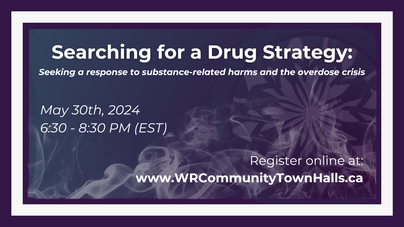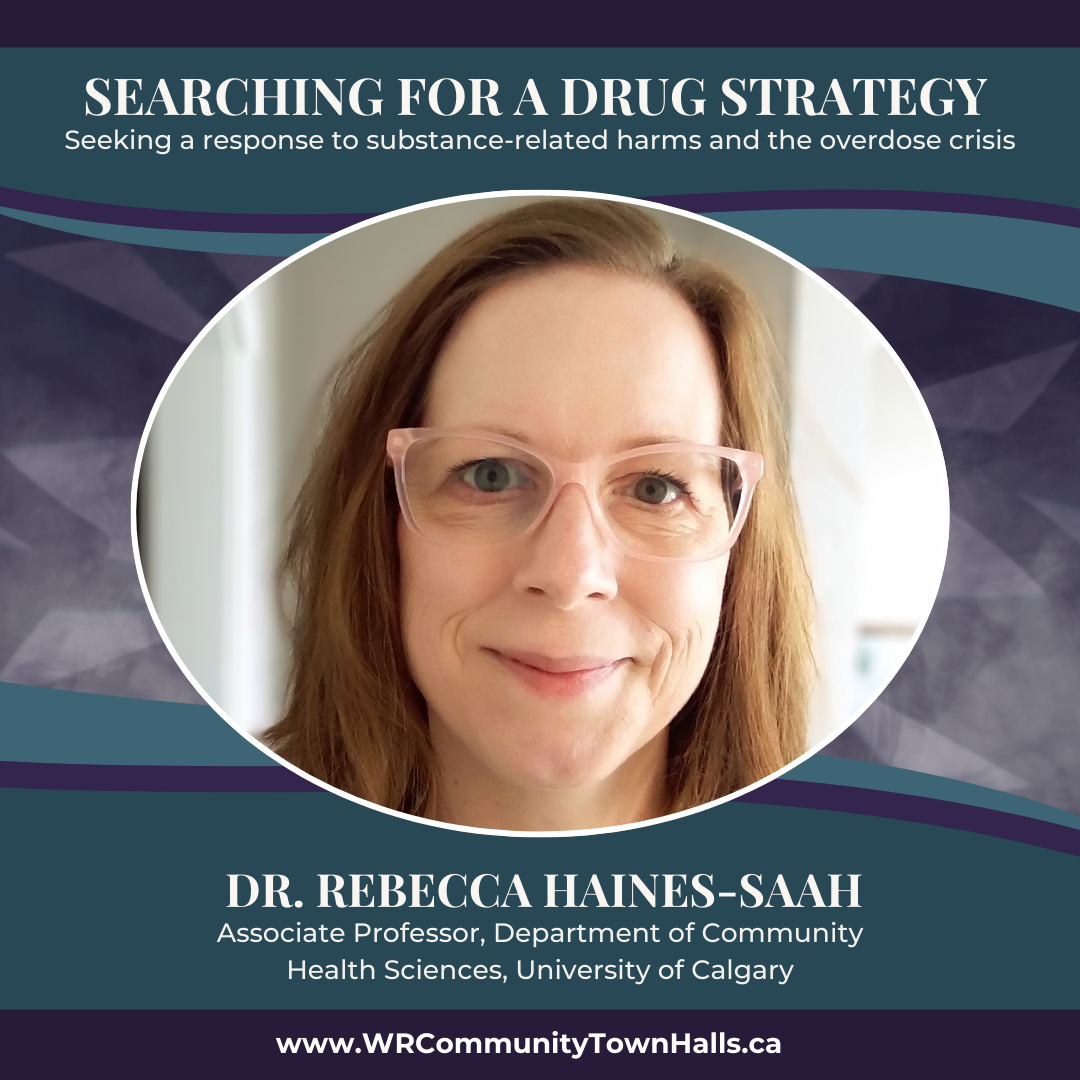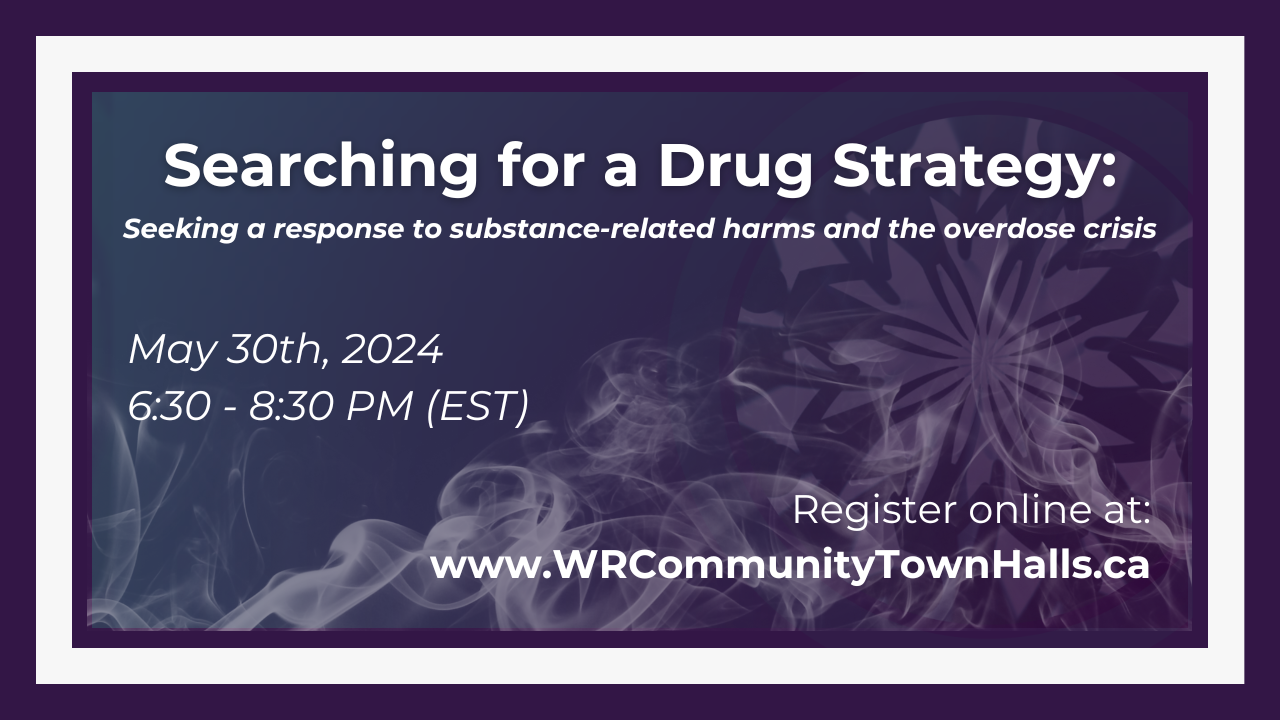Dr. Rebecca Haines-Saah
Associate Professor, Department of Community Health Sciences, University of Calgary
|
I am an Associate Professor in the Department of Community Health Sciences, Cumming School of Medicine, University of Calgary. I am a public health sociologist, with a PhD (2008) in Behavioural Health Sciences and Addiction Studies from the University of Toronto.
My research interests are in public health and harm reduction approaches to substance use and drug policy reform. My recent projects have focused on youth and young adult cannabis use and opioid use, the family contexts of substance use, and parent advocacy for action on Canada’s overdose death emergency. |
Presentation
|
|
view presentation slides
|
On May 30, 2024, a town hall meeting was held to address the escalating opioid crisis and discuss comprehensive strategies involving prevention, treatment, harm reduction, and enforcement. The event featured several distinguished speakers who provided insights based on their expertise and experiences in various aspects of drug policy and public health.
Dr. Rebecca Haines-Saah, a youth substance use researcher, emphasized the importance of effective prevention strategies, debunking myths about fear-based messaging and stressing the need for fact-based education. She highlighted the role of social issues such as poverty, discrimination, and community support in preventing substance use among youth. This town hall underscored the complexity of the opioid crisis and the necessity of a multifaceted approach involving prevention, harm reduction, treatment, and enforcement. The speakers collectively advocated for evidence-based strategies, comprehensive care, and collaborative efforts to effectively address the crisis and support affected individuals and communities. |
Guest Speakers: |
Rethinking Youth Drug Prevention
- Ineffective Strategies: Fear-based messaging and stigmatizing drug use do not prevent youth substance use.
- Realistic Goals: Preventing all experimentation is unrealistic; providing fact-based education is more effective.
- Social Issues: Addressing poverty, discrimination, and providing community programs are key to effective drug prevention.
Dr. Rebecca Haines-Saah discusses the importance of prevention in drug policy, focusing on youth substance use. She begins by debunking common myths about prevention and emphasizes the need for effective strategies. Haines-Saah outlines the four pillars of drug strategy: prevention, treatment, harm reduction, and enforcement, developed in Vancouver decades ago. As a youth substance use researcher with 25 years of experience, she emphasizes that fear-based messaging and stigmatizing drug use do not work. Strategies like "Just Say No" and scare tactics fail to address the social and contextual factors influencing youth substance use. Instead, providing fact-based education is crucial.
She explains that preventing any experimentation is unrealistic. The average age for initiating substance use and sexual activity in Canada is around 14. Effective prevention should focus on providing accurate information, similar to sex education during the AIDS epidemic. This approach does not endorse drug use but aims to keep young people safe.
Haines-Saah’s third key message is that the best drug prevention is not about drugs but about addressing broader social issues. Ending poverty, targeting discrimination (homophobia, racism, xenophobia, colonialism), and providing community-based programs can significantly reduce substance use. These efforts create a supportive environment, reducing the likelihood of young people turning to substances for coping.
She highlights past ineffective prevention methods, such as the "Just Say No" campaign and brain harm messaging, which did not provide useful information to youth. Instead, successful prevention strategies include building safer school communities, promoting social and emotional learning, and resolving conflicts amongst peers. Programs like the Icelandic model, which reduced substance use prevalence by providing free recreation and parent support groups, are examples of upstream approaches.
Haines-Saah concludes by stressing the importance of open communication, trust, and respect between parents and teens. Parents should model responsible substance use and engage in non-judgmental dialogue with their children. Schools should implement evidence-based programs that focus on building positive behaviours and skills. Additionally, involving teens in program development ensures that interventions are relevant and effective.
She explains that preventing any experimentation is unrealistic. The average age for initiating substance use and sexual activity in Canada is around 14. Effective prevention should focus on providing accurate information, similar to sex education during the AIDS epidemic. This approach does not endorse drug use but aims to keep young people safe.
Haines-Saah’s third key message is that the best drug prevention is not about drugs but about addressing broader social issues. Ending poverty, targeting discrimination (homophobia, racism, xenophobia, colonialism), and providing community-based programs can significantly reduce substance use. These efforts create a supportive environment, reducing the likelihood of young people turning to substances for coping.
She highlights past ineffective prevention methods, such as the "Just Say No" campaign and brain harm messaging, which did not provide useful information to youth. Instead, successful prevention strategies include building safer school communities, promoting social and emotional learning, and resolving conflicts amongst peers. Programs like the Icelandic model, which reduced substance use prevalence by providing free recreation and parent support groups, are examples of upstream approaches.
Haines-Saah concludes by stressing the importance of open communication, trust, and respect between parents and teens. Parents should model responsible substance use and engage in non-judgmental dialogue with their children. Schools should implement evidence-based programs that focus on building positive behaviours and skills. Additionally, involving teens in program development ensures that interventions are relevant and effective.



